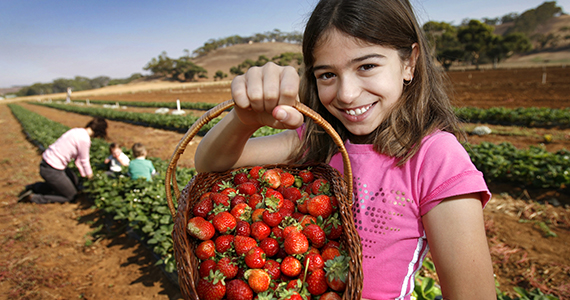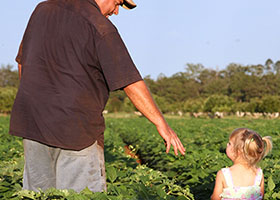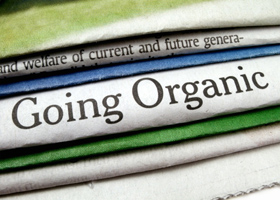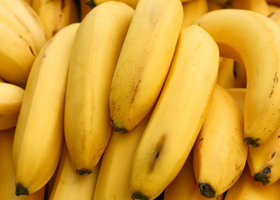Everything you wanted to know about organic (or almost)…
Although numerous food sources tell us to buy organic where possible, for many people confusion remains about exactly what sets organic farming apart from more conventional varieties.
Here the Biological Farmers of Australia answer the most common questions put to them about what organic food is, how it’s produced, and why it’s worth your support.
What is Organic Farming?
Organics is all about health management and disease prevention – with no synthetic chemicals
Organic and biodynamic farming means farming in a way which cares for the environment, without relying upon synthetic chemicals and other unnatural interventionist approaches. Hence, organic food comes from organic farms utilising the best of both traditional agriculture and modern techniques, using nature and natural processes as its bedrock.
Rather than using synthetic pesticides to kill pests, farmers prevent pests by planting a diverse range of crops, by rotating crops, using natural biological and environmentally friendly inputs, and conserving natural ecosystems. This means no artificial pesticides, no synthetic herbicides, no hormones and no growth promotants which otherwise have a questionable place in our aim to maintain healthy bodies as well as healthy farms.
The same logic of natural and preventative health management (rather than reactive disease management) is applied to GMOs or Genetically Modified Organisms which the organic industry prohibits from use in production of organic foods. With many safe and proven forms of farming already available, the organic farmer believes it is important to allow Mother Nature to provide us food the way nature intended.
Also the organic industry believes that not enough is understood about GMOs, and while there also is a sceptical marketplace of consumers regarding this technology in the food industry, the organic industry believes it is best to be precautionary in its approach to such new, untested, and at this point yet to be established as necessary, technologies.
So what is the fundamental difference between organic farm practices and “conventional” or non organic?
Organic farming has a total focus on soil health. By focusing on soil health first, the health of the plant follows. This in turn enables the plant to feed animals on a balanced and healthy diet. It is all about health management (not disease control) and preventative techniques.
Like with the human body, if you treat your body firstly in terms of (disease) prevention and healthy practices, you are less likely to ever need interventionist medicine, let alone surgery. Organic farming aims to achieve the same outcome where prevention of disease and the focus on health ensures a productive farming environment.

Biodiversity in organic farms || Organic farms are required to set aside at least 5% of their farming environment to biodiversity areas where there is no intensive agricultural production. This can include wetlands, native pastures and tree “buffers”, which act as excellent harbours for native animals and other plants. This in turn assists in creating a more natural setting and helps protect the environment, while also assisting in farm management through use of “functional” biodiversity to manage pest and diseases.
Chemicals (and GMOs) in the environment || With its prohibition on synthetic pesticide and fungicide treatments, as well as prohibiting GMOs, organics assists in protecting the wider environment as well as farm land where our foods are produced.
Soils and water efficiency || Building healthy soils, increasing soil organic matter and soil life assists in the soil being able to retain more moisture. In a water scarce continent this is a very useful farming practice and enables organic farmers through time to be more efficient in their water use and therefore have less water needs. It also assists the farm in getting through periods of extended drought.
Agriculture and human health || It is increasingly being recognised that at a fundamental level the health of the soil is inextricably linked with the health of humans. Organic farming is about profoundly changing the way we look at and manage our health. Soils deficient in nutrients, unbalanced and with little life, are unlikely to produce the kinds of healthy plants and food that humans and animals need for optimum nutrition. Many disease and health problems of the modern world may well be prevented or reduced through a greater focus on healthy and health giving farming systems. Organics is part of a movement to profoundly change the way we do produce our foods and the way in which we view health management in our communities.

What about the productivity of organic farms? How do they compare to conventional, non-organic farms?
The notion of productivity, i.e. a farm producing a certain amount of “goods” is an important issue to look at. Often we measure productivity of a farm one commodity or crop at a time only. This often distracts us from the overall productivity of the farm.
For instance, instead of talking about a certain farm producing X tons of wheat in a year, or X tons of carrots, organic farming systems are more oriented to the multiple yields they might deliver – this might be livestock, a number of crops and most importantly the longer term sustainable farming system that can keep on being productive.
Many organic farms are just as productive, and sometimes more so, than conventional farms. How can this be? In conserving soil organic matter, this helps retain moisture, that can assist through a drought period in making the farm more resilient and in the long term more productive. Also a diversification of both cropping and livestock production (something less relied upon than traditionally many years ago) enables the farmer to trade in more than one commodity and hence furthers the resilience of their farming system.
But what about when disease or pests do break out on an organic farm?
This can still happen, though it still often happens differently for two reasons. One is that if the plants are living in a well balanced soil and healthy, they are far less likely to be attacked so significantly by pests and diseases. Secondly, having a focus on biodiversity, often pests have many “enemies” or predators in the diverse flora and fauna of an organic farming system. This makes it harder for pests to get a foot hold and become such a significant problem.
This is why you will often hear that some organic farmers don’t have the same pest or disease problems as might be expected in non organic farming systems. There are however a range of natural products available for use by organic farmers as a last resort. These things include natural oils, naturally occurring substances which have pesticidal properties and predatory organisms that can be released which attack a particular pest.
The BFA maintains a registration program for farm input products and prints this in the Australian Organic Producer magazine. See also www.bfa.com.au for the Organic Product Search which lists both input products, certified organic farms and products generally.
So does it therefore cost more to farm organically?
It certainly can, and the major issue is one of labour. This is for two reasons. One is that in a preventative (disease and pest management) approach to farming this can simply take longer to inspect and monitor fields, or cost more to have the technologies available to monitor crops and pests.
Also organics does not permit synthetic herbicides and to this end there are some sectors or crop types (eg carrots, onions and soy beans) that all in their own way require quite considerable weeding. This has to occur manually either by hand (some carrot farmers employ large groups of “chippers” through their season) or by tractor with a range of organic weeding tools.
What’s the difference between organic and biodynamic?
Biodynamic farming is an enhanced or alternative method of organic farming. Biodynamic utilises traditional farming techniques and a prescribed list of biological or natural “preparations”, whilst acknowledging and working with universal or cosmic forces that are at play in the farming environment. Many organic farmers practice biodynamic methods and the BFA’s certification program Australian Certified Organic covers both Biodynamic (or BD) certification as well as organic certification.
Biodynamic farming is regulated under the same standard in Australia as organic. Most countries have regulations for organic that cover both approaches and in this article when we talk organic we are also talking biodynamic.
What about livestock in organic farms?
While not all organic farms have livestock, animals are a core component of recycling nutrients and assisting in the biodiversity on the farm at both a macro (large) as well as micro (small – all the way to soil microbes) level. Of course livestock is also used for meat production. So what makes an animal organic?
Animals must be fed certified organic feeds, cannot be fed or treated with growth promotants or antibiotics during their lifetime and must be able to roam and graze freely performing their natural behaviours. Organic livestock producers must practice “best environmental management” ensuring biodiversity and land and wildlife conservation. Each animal sold must have a verified lifetime of organic management in accord with the standard and carry clear identification.
Animal welfare is also paramount. Consideration for the natural behaviours of animals is critical in the planning and management of organic livestock farms.
The Biological Farmers of Australia is Australia’s foremost organic body, a not-for-profit organisation that represents more than 3,000 organic industry farmers, operators, producers, processors and traders. For more information on buying organic produce and the growth of organic food in Australia, see their website.






